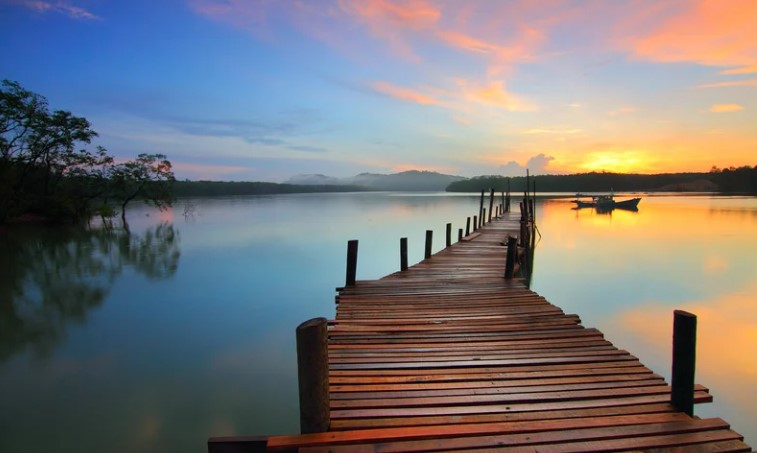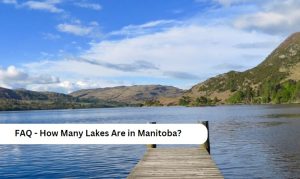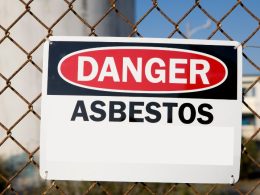Manitoba is home to more than half of Canada’s freshwater lakes, and with it comes the opportunity to explore some beautiful wilderness. The province has over 1,000 lakes ranging from tiny ponds barely big enough for a swimming hole to larger ones perfect for fishing and boating. In this blog, we will share with you all about how many lakes are in Manitoba and the top lakes to visit to enjoy the weekend.
How Many Lakes Are in Manitoba?
Manitoba has over 100,000 lakes. It is the most lake-rich province in Canada and has the most lakes per capita in that country as well. Manitoba has more lakes per square kilometre than any other province or territory, with many of these bodies of water located in remote areas where they are little known to outsiders.
In fact, Manitoba has more than four times as many lakes as Ontario and British Columbia combined!
Top 8 Lakes to Visit in Manitoba
There are over 100000 lakes in Manitoba, but some lakes are unique in nature. In that case, we have listed the top eight lakes in the Mnitoba to visit, and such lakes are,
- Lake Winnipeg
- Lac du Bonnet
- Shoal Lake
- Winnipegosis Lake
- Burntwood Lake
- Lynn Lake, Manitoba
- Oak Point Lake
- McGregor lake
Let’s see those lakes in a detailed manner and see what the special is in them.
Lake Winnipeg
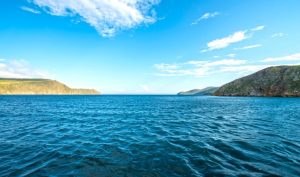
Lake Winnipeg is the largest lake in Manitoba, Canada and the second-largest freshwater lake in North America. It’s also the third-largest lake on Earth by volume, with an area of some 30,000 square miles (78,200 square kilometres). The lake straddles both Manitoba and Ontario, with its northern end located near Churchill, where it drains into Hudson Bay.
A popular tourist destination for boating enthusiasts, Lake Winnipeg features many islands, including Manitoulin Island, which has been inhabited since prehistory when it was part of what is now Ontario but was then part of Manitoba’s territory along with Fort Alexander (now Portage la Prairie) which became important fur trade sites during this time period too.
Lac du Bonnet
Lac du Bonnet is the largest lake in Manitoba, and it’s located in the Lake Winnipeg Basin. This stunning body of water is also home to Lake Winnipeg’s outlet, which empties into Lac du Bonnet and then into Hudson Bay.
The river that flows from Lac du Bonnet is known as the Red River of North America, while its tributary rivers are called Assiniboine River (also known as Pembina River), and its tributaries include Fish Creek Falls Provincial Park area as well as Spirit Falls Provincial Park area near Eston Falls Provincial Park.
Shoal Lake
Shoal Lake is one of the largest lakes in Manitoba. It’s located near the northeast corner of the province and one of only two lakes spanning both sides of Manitoba. The other lake is Lac des Prairies (the southern half).
Shoal Lake is a popular destination for anglers because many different types of fish are found here, including walleye and northern pike. There are also opportunities to hike along its shoreline if you’re looking for some exercise during your visit!
The lake is also home to a variety of wildlife, including geese, swans and ducks. Visitors will often see them feeding in the marshes near the lake’s shores.
The lake is located about 130 kilometres north of Winnipeg. It’s also quite close to the U.S. border, so it’s easy for American visitors to drive up here and get a taste of Canadian culture!
Winnipegosis Lake
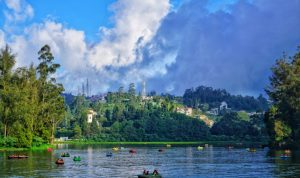
Winnipegosis Lake is the largest lake in Manitoba and the second largest lake in Canada. It’s located in the province of Manitoba, which is where you will find many other great lakes and rivers as well. Winnipegosis Lake covers an area of 1268 square kilometres (488 square miles). This makes it about twice as big as our next largest lake!
Winnipegosis Lake has an average depth of 21 meters (70 feet), making it ideal for swimming or boating activities such as fishing or kayaking. The shores are dotted with cottages that offer tourists a warm place to rest on their way through this beautiful part of North America’s great outdoors!
Burntwood Lake
Burntwood Lake is a lake in Manitoba. It’s located in the southwestern part of Manitoba, and it’s the largest natural lake in that province.
The Burntwood Lakes Region is home to several lakeside communities, including:
- Flavel Lake Village (a resort town)
- Stony Mountain National Park
The area around Burntwood Lake is also known for its rich history and culture; over 200 years ago, members of this community helped first nations people survive harsh winters by providing them with food through trading routes they established along rivers such as Burntwood Creek.
Lynn Lake

Lynn Lake is a freshwater lake in Manitoba. Located in the rural municipality of Lynn Lake, it’s approximately 48 km² in size and 9 km long.
An earthquake created the lake on July 23rd, 1876 that caused the land around it to sink by up to 30 feet below sea level. The resulting depression became known as “the hole.”
The lake is named after the nearby community of Lynn Lake, which was established in 1887 by the Canadian Pacific Railway as a divisional point on its transcontinental line. The name Lynn comes from a railway engineer who died while building the line through northern Manitoba.
Oak Point Lake
Oak Point Lake is a lake in the Rural Municipality of Woodlands. It’s located at elevations from between 200-300 m (660 ft) above sea level and has a surface area of 270 ha (620 acres). The lake is fed by Oak Point Creek as well as several other creeks, including Brights Creek and Clearwater River.
The name “Oak Point” comes from the fact that this area was originally covered with oak trees which were cut down to make room for homesteaders during the early 1900s. When Manitoba became part of Canada because it was thought to be too far away from major trade routes such as Winnipeg or Portage la Prairie.
Where grain could be shipped outwards towards eastern Canada using railway lines built by Canadian National Railways in 1870s onward into 1880s decade until 1910s decade when automobiles started replacing horses because they needed less maintenance compared.
McGregor Lake
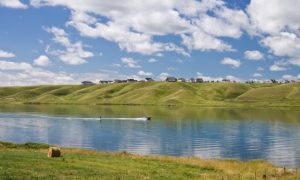
McGregor Lake is an excellent lake to visit in Manitoba. It’s located on the east side of Lake Winnipeg, just north of Lac du Bonnet and south of Riding Mountain National Park.
The lake spans approximately 2 miles and has a surface area of 14 square miles (35 square km). The deepest point is at 1,864 feet (541m) below sea level, and its maximum depth is 2,964 feet (886m).
Freshwater lakes in Manitoba
Freshwater lakes in Manitoba include:
- Lake Winnipeg – The largest freshwater lake in Canada, with an area of 516 km2 (204 square miles). It is located near the city of Winnipeg in southwestern Manitoba.
- Swan Lake – A small lake located near Swan River on the southeastern edge of Manitoba.
Conclusion
Manitoba has many lakes, but only so many can fit into the province. So, if you’re looking for some good fishing spots or want to relax and enjoy nature, Manitoba may be the place for you! We hope this blog gave you what you need to know about the lakes in Manitoba.
FAQ – How Many Lakes Are in Manitoba?
What province has the most lakes?
Manitoba is Canada’s largest province by area and has more than 100,000 lakes. It isn’t surprising that Manitoba has the most lakes in Canada. But what about Manitoba’s total number of lakes?
According to the Great Lakes Basin Initiative (GLBI), the province has over 350,000 ponds and wetlands. This number includes both natural bodies of water as well as artificial impoundments created by humans.
Does Manitoba have over 100000 lakes?
Yes, Manitoba has over 100000 lakes.
Manitoba has more lakes than any other province in Canada, and it also has the most lakes of any Canadian province.
What is the biggest lake in Manitoba?
The biggest lake in Manitoba is Lake Winnipeg. This 1,854 square kilometre body of water is located on the Souris River, which flows from Lake Winnipegosis to Hudson Bay. It’s considered a large lake because it has an average depth of about 40 feet (12 metres).
However, there are other lakes that have more volume than this one: in fact, there are 44 major lakes in Manitoba!
What is Canada’s biggest lake?
Canada’s largest and second largest lake in the world is Lake Winnipeg, which borders Canada and the U.S. It’s also the largest freshwater lake by surface area in North America and second only to Titicaca (Peru) as the world’s largest freshwater body.
The lake covers an area of 1,625 km² and has a maximum depth of 168 m at its deepest point. The average depth is 30 meters, with a top boating speed of 7 knots (9 mph). It can hold up to 19 million cubic metres when full but typically holds about 10 million cubic metres at any given time due to evaporation or leakage into nearby rivers through streams that feed into it from both sides.
What is the deepest lake in Manitoba?
The deepest lake in Manitoba is Lake Winnipeg. It’s also the largest lake, second only to Lake Superior in size. The average depth of this lake is 930 metres (2,950 ft), making it one of North America’s largest freshwater bodies.
When you visit this beautiful body of water, be sure to pay attention because it might surprise you!




